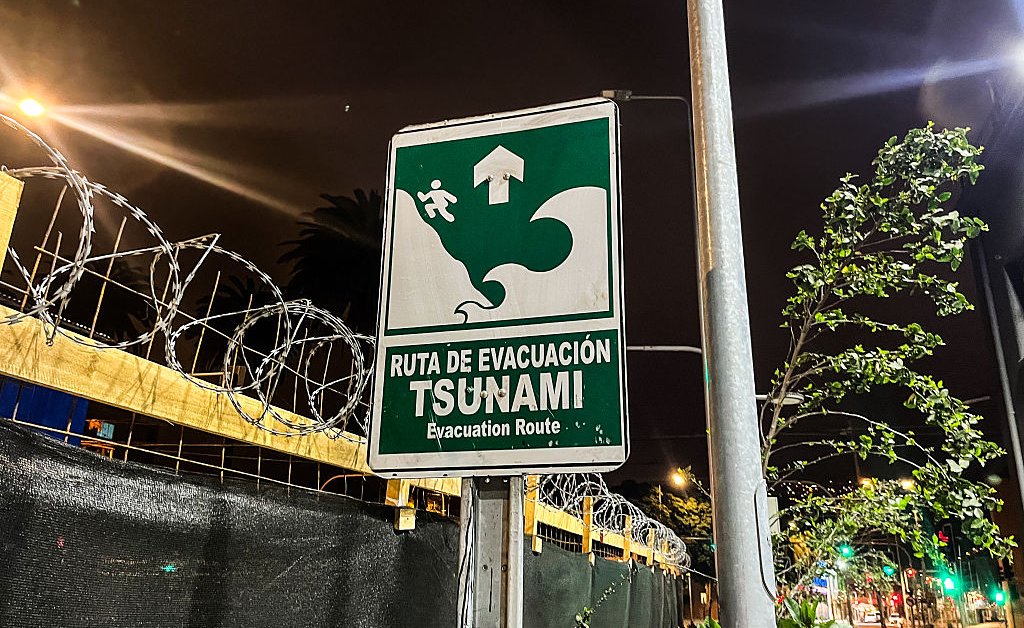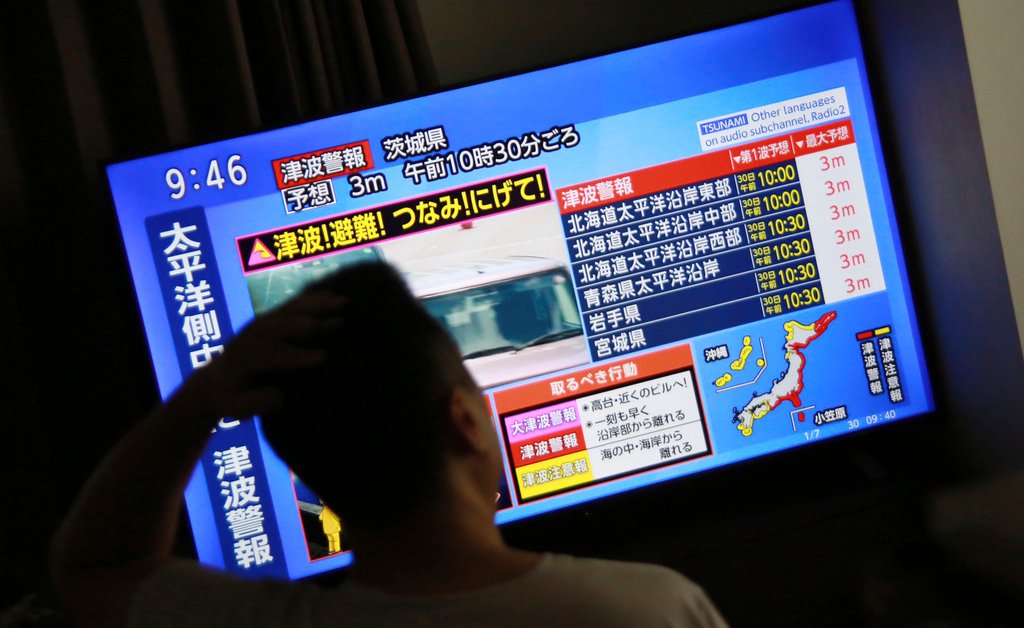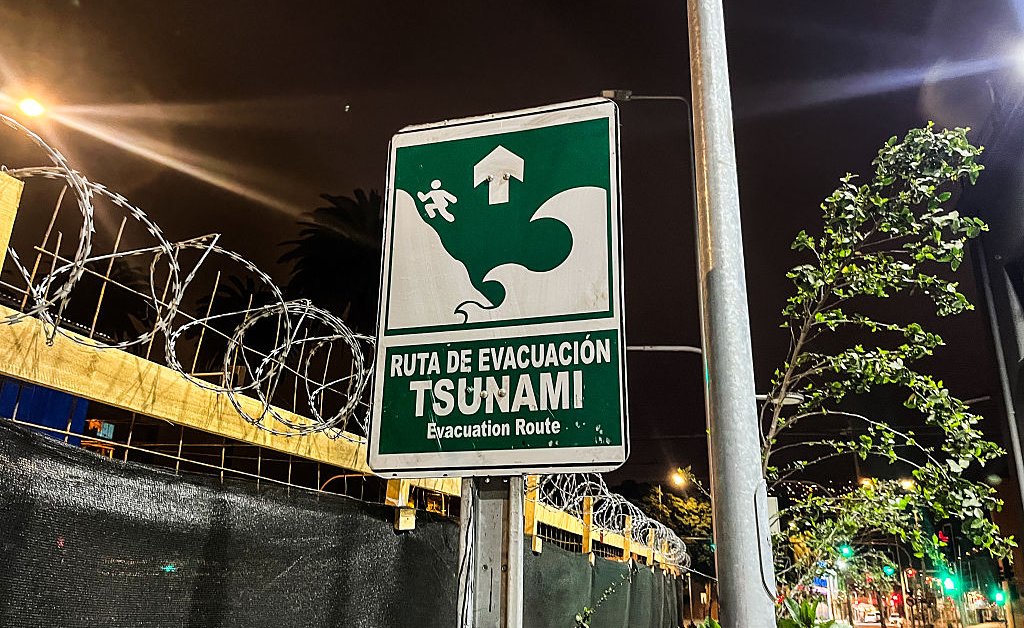How To Stay Safe During A Tsunami: A Comprehensive Guide To Preparedness

Welcome to your ultimate source for breaking news, trending updates, and in-depth stories from around the world. Whether it's politics, technology, entertainment, sports, or lifestyle, we bring you real-time updates that keep you informed and ahead of the curve.
Our team works tirelessly to ensure you never miss a moment. From the latest developments in global events to the most talked-about topics on social media, our news platform is designed to deliver accurate and timely information, all in one place.
Stay in the know and join thousands of readers who trust us for reliable, up-to-date content. Explore our expertly curated articles and dive deeper into the stories that matter to you. Visit Best Website now and be part of the conversation. Don't miss out on the headlines that shape our world!
Table of Contents
How to Stay Safe During a Tsunami: A Comprehensive Guide to Preparedness
Tsunamis, those devastating walls of water, are a terrifying natural disaster. But understanding the risks and knowing how to react can significantly increase your chances of survival. This comprehensive guide provides crucial information on tsunami preparedness, warning signs, evacuation procedures, and post-tsunami safety. Don't wait for a disaster to strike – learn how to protect yourself and your loved ones today.
Understanding the Threat: What is a Tsunami?
A tsunami, often mistakenly called a tidal wave, is a series of massive ocean waves caused by underwater disturbances like earthquakes, volcanic eruptions, or landslides. These waves can travel at incredible speeds across the ocean, reaching heights of tens of meters when they hit the shore. The immense power of a tsunami can cause widespread destruction, flooding, and loss of life.
Recognizing the Warning Signs: Early Detection is Key
While predicting the exact time and location of a tsunami is impossible, several warning signs can indicate an impending threat:
- Earthquake: A strong earthquake, particularly near the coast, is a major warning sign. If you feel a powerful earthquake and are near the coast, immediately move to higher ground.
- Unusual Ocean Behavior: Noticeable receding of the ocean, exposing the seafloor, is a critical warning sign. This often precedes the arrival of the tsunami waves. Do not go down to the beach to investigate – evacuate immediately.
- Official Warnings: Heed all official tsunami warnings and evacuation orders issued by local authorities and emergency services. These warnings utilize advanced detection systems and are your best source of information. Sign up for emergency alerts on your phone.
- Sirens: Familiarize yourself with local tsunami warning sirens. Understand what the sound means and your designated evacuation route.
Evacuation Procedures: Your Survival Plan
Having a well-defined evacuation plan is crucial. This plan should include:
- Designated Evacuation Routes: Identify multiple evacuation routes to higher ground, and practice them regularly with your family.
- Meeting Point: Establish a designated meeting point away from the coastal area, where family members can reunite after an evacuation.
- Emergency Kit: Prepare a comprehensive emergency kit containing essential supplies like water, non-perishable food, first-aid supplies, a flashlight, a battery-powered radio, and important documents. .
- Vertical Evacuation: If possible, head to a multi-story building or a designated evacuation shelter.
Post-Tsunami Safety: What to Do After the Waves Recede
The immediate danger may pass after the initial waves, but significant risks remain:
- Aftershocks: Be prepared for aftershocks, which can trigger further damage and landslides.
- Debris and Contamination: Avoid contaminated water and debris. The water may be polluted, and debris can cause injury.
- Further Waves: Be aware that additional waves can occur. Stay on higher ground until officials declare it safe to return.
- Follow Instructions: Follow the instructions of emergency personnel. They are trained to handle post-tsunami situations.
Staying Informed and Prepared:
Staying informed about tsunami risks and preparedness is a continuous process. Regularly check your local emergency management agency's website for updates, participate in community drills, and educate your family and friends on tsunami safety procedures. Knowledge is your best defense against this powerful natural force.
Call to Action: Share this crucial information with your network. Help spread awareness and save lives. Knowing how to prepare for a tsunami can make the difference between survival and tragedy.

Thank you for visiting our website, your trusted source for the latest updates and in-depth coverage on How To Stay Safe During A Tsunami: A Comprehensive Guide To Preparedness. We're committed to keeping you informed with timely and accurate information to meet your curiosity and needs.
If you have any questions, suggestions, or feedback, we'd love to hear from you. Your insights are valuable to us and help us improve to serve you better. Feel free to reach out through our contact page.
Don't forget to bookmark our website and check back regularly for the latest headlines and trending topics. See you next time, and thank you for being part of our growing community!
Featured Posts
-
 Battlefield 6 Eas Vision Beyond A Simple Game
Aug 01, 2025
Battlefield 6 Eas Vision Beyond A Simple Game
Aug 01, 2025 -
 Historic Russian Earthquake Where Tsunamis Have Caused The Most Damage
Aug 01, 2025
Historic Russian Earthquake Where Tsunamis Have Caused The Most Damage
Aug 01, 2025 -
 Tsunami Preparedness Your Action Plan For Before During And After A Tsunami
Aug 01, 2025
Tsunami Preparedness Your Action Plan For Before During And After A Tsunami
Aug 01, 2025 -
 Luckin Coffee Otcmkts Lkncy Stock Up 5 2 Investment Opportunity
Aug 01, 2025
Luckin Coffee Otcmkts Lkncy Stock Up 5 2 Investment Opportunity
Aug 01, 2025 -
 Vikings Mc Carthy On Rough Patches Lessons Learned Growth Ahead
Aug 01, 2025
Vikings Mc Carthy On Rough Patches Lessons Learned Growth Ahead
Aug 01, 2025
